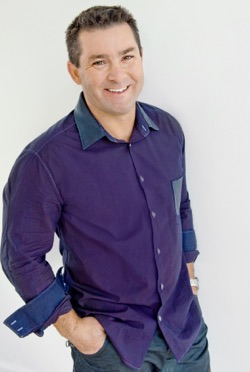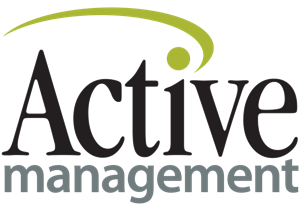Michelle Segar Part 1: The Secret Life of Motivation – Are You Fueled to Succeed?

We call it “motivation.” But what does this concept really mean and how does it actually help us maintain our drive to achieve our goals every day?
In today’s post, Part 1 in my 3-part series on motivation, I address the “best” and “worst” types of motivation, as well as how this knowledge can be leveraged to help YOU achieve sustainable health-related and self-caring behaviors (more movement, sleep, or better eating). This discussion applies to individuals, practitioners and organizations, as you will learn below.
While I use it in my work, I’ve come to believe that the term “motivation” is unhelpful for most individuals.
- Motivation refers to the drive and desire we feel to pursue our goals and values. While “motivation” is tossed around by everyone under the sun, this term doesn’t really get at its core meaning and the crucial role it plays in our long-term success, health, and well-being.
- I believe that a more helpful way to think and talk about “motivation” is that it is the fuel we all need to persist toward our goals. No fuel = no energy to pursue what is most important to us.
We All Need Fuel
Think about automobiles. Without gas or another type of energy, our car won’t go – whether it’s a Ford or Porsche, right? If we are not energized to persevere toward our goals, then we won’t be able to realize what is most important to our lives. It’s that simple.
For most people, the common thinking is that it makes no difference if our energy source is external or internal. However, research clearly shows that whether our fuel for our goals is sourced externally or internally has tremendous implications for our success in achieving them.
Does it take a clinician’s admonition or Nutrisystem®’s new “Fresh Start” advertising to spark your energy for making a change or initiating a new goal? If so, you can consider yourself as having an external source of fuel.
While external fuel sources effectively get us to initiate behaviors (like trying to move more, improve our parenting, etc.), being externally fueled is not optimal for sticking with behaviors over time.
If our drive for self-care depends on other people or events, we are dependent upon a “foreign” source of fuel, not dissimilar to needing to find a gas station if we are to keep our car moving.
Not only is externally-fueled energy less likely to lead to success, it actually is very costly for everyone: individuals, practitioners, patients, and organizations.
For Individuals (you, me):
If we seek external sources of fuel to “motivate” ourselves, then we are investing our precious energy and inspiration pursuing something that is likely to lead to disappointment. When we invest our energy and money in approaches that are less effective over time, then we are not investing in the most strategic way. This has an exponentially negative effect. Not only do we fail to achieve the long-term results we want, but additionally, we wind up being deflated and having our core intentions to live as well as we can, undermined.
For Practitioners: (whether treating physicians, NPs, personal trainers, or coaches):
Prescribing and advocating that your patients/clients adopt healthier lifestyles in order to achieve clinical “gold standards” (e.g., in blood pressure, cholesterol, or weight) sets the entire behavioral process up on something that is, to a great extent, irrelevant to their daily pressures and roles. Once patients are out of the “context” offering external fuel (i.e., your office) their tank quickly gets to empty – setting both you and your patient up to fail. This joint failure kills their desire and energy to change, possibly even influencing future decisions to not seek care, leaving you feeling frustrated and ineffective.
But the cost of externally fueling is also expensive for organizations.
Incentivizing employees to take a “HRA” or sign up for a lifestyle change program with financial rewards (e.g., an externally-sourced fuel) is currently all the rage in the health promotion industry. While there is research showing that incentives work to get some of the population to “get started” there is little evidence that these participants sustain lifestyle changes over time. Without sustainable behavior, optimal health care savings and performance benefits cannot be achieved. Thus, offering incentives without having a specific plan in place to help employees convert this external source of fuel into an internal one is a short sighted and expensive strategy.
So, what’s a better alternative and how can we all achieve it? I hope you’ll stay tuned for part 2 of this conversation next week.
I’d love your thoughts and experiences with using externally-sourced fuel for change – share with me in the comments below.
Moving Toward Happiness: One Step a Time,

Michelle
Find these ideas interesting or useful? If so, please share this post with your friends, family, colleagues, and/or health care professionals through social media. Connect with Michelle Segar at www.MichelleSegar.com
You can grab a copy of No Sweat by clicking here.
Michelle has also been a guest on The Fitness Business Podcast. In fact she had one of the top 4 most downloaded shows in 2015. You can listen to her shows by clicking the links below:
054 Michelle Segar – Self Care Behaviour and the Effect it has on Trainer Client Relationships

Justin is the Managing Director of Active Management, which he began January 2004. He offers coaching to businesses worldwide in everything from start up and design to marketing and sales systems. Justin also facilitates four Australian and New Zealand ‘fitness industry roundtables’ events, which allows him to see a huge cross section of business models.

Great article. Thank you.